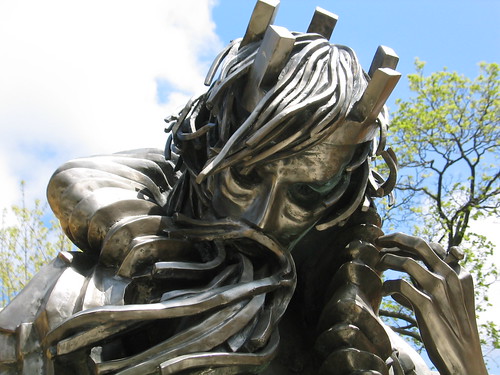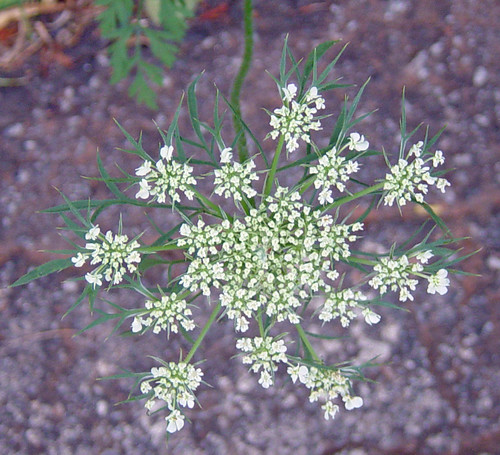THE BOOK
Early Poems, William Carlos Williams (
ISBN: 0486292940
$1.50
BEFORE YOU READ EARLY POEM, WILLIAM CARLOS WILLIAMS READ THIS…
A SORT OF A SONG
by William Carlos Williams
Let the snake wait under
his weed
and the writing
be of words, slow and quick, sharp
to strike, quiet to wait,
sleepless.
---through metaphor to reconcile
the people and the stones.
Compose. (No ideas
but in things) Invent!
Saxifrage is my flower that splits
the rocks.
One way to read “A Sort of a Song” is as a guide to Williams’s poetry. The snake is a metaphor for the poet. The poet, like the snake, waits patiently and quietly in the weeds, observing the world “sleepless[ly]”. Then, when the poet’s mind seizes on something, the poet is “sharp to strike” before again becoming “quiet to wait.” So, the poet is a patient observer who when his or her imagination is stirred strikes with language.
Then, beginning in the seventh line, the speaker talks about using “metaphor to reconcile/the people and the stones.” In other words the poet—through metaphor—connects people to the world around them. The poet shows relationships, connections, likenesses, disruptions between people and things, between feelings and things, between ideas and things, between this and that. In Williams’s poetry these relationships are often implied not explicit, so be on your toes. You will notice that Williams’s poetry incessantly (or “sleepless[ly]”) shows an active, imaginative mind expressing relationships between itself and its surroundings, and among things in the surroundings.
That leads me to the most famous phrase in the poem: “No ideas/but in things.” For Williams, the ideas (and the feelings) in poetry must be found in, must be based upon, must be derived from the physical world we inhabit.
Some people—some philosophers, some poets—think that means we are then trapped by the physical world. Williams answers with an exclamation: “Invent!” In other words, the inventive imagination allows us to break through the limitations of the physical world, allowing us to create. To express this concept Williams uses a final metaphor from the physical world. The saxifrage plant (the name is Latin for rock-breaker) is capable of growing in rock crevices. Therefore, Williams is saying that the imagination (“ideas”), like the saxifrage, bursts forth out of the limitations of the physical world (“things” and “rocks”).
The other thing to notice about this poem is its use of language. Williams is fond of simple language, rhythmic phrasing, and asymmetrical sound. In other words, he uses common words a 20th (now 21st) century American reader can understand; he is fond of breaking lines into phrases and small units; he doesn’t rhyme but his poetry is still musical: “stones./Compose,” the “w’s” in the first five lines, and the sibilant “s’s” in lines 5-6.
As you read, pay close attention to the relationship between the speaker’s imagination (“ideas”) and the world outside the speaker (“things”). Also, pay close attention to Williams’s use of language: word choice (word choice), sentence structure (syntax), line breaks, and music (assonance, consonance, alliteration).
WHILE
· In your journal make note of the relationship between “ideas” and “things,” between the speaker of the poems and his or her surroundings. Also make note of the subtle music of Williams’s free verse poetry.
· In your journal make note of questions that occur to you.
· Also note connections between different parts of the novel; between the novel and other literature you have read, especially poems and songs, but also, perhaps, to the other summer reading books; and between the novel and your own experiences, thoughts, and feelings.
You should have notes on all of the poems in the book. These notes will be crucial for the second unit of the year in September.
AFTER READING DO THIS…
* Write an informal open response (300+ words) in which you discuss the relationship in five poems between the outer world (“things”) and the inner world of the observer (“ideas” and feelings, too). Williams writes, "No ideas/but in things," implying that our inner ideas must be grounded in the "things" that we observe around us. Discuss how in the five poems you have chosen the speaker of the poem (the poetic persona) uses observations of the world around him "things" to generate "ideas" and express feelings.
* Write an informal open response (300+ words) in which you examine Williams’s use of language. Cite passages from at least five poems in your response. Consider his diction (word choices): simple or complex? Consider his syntax (how he puts words together) and use of rhythm. Consider his line breaks. (Do the line breaks affect rhythm? How? Do they affect meaning? How? Consider the subtle music: assonance, consonance, alliteration.
Your responses should include observations and ideas about the observations. How does his use of language matter? How is the poem affected by his choice of words, his arrangement of words, his breaking of lines, his use of the music of words.
* Poem or personal response
Write a poem of your own using Williams’s work as a guide. First, determine three characteristics of Williams’s poetry. Then write a poem that emulates those three characteristics. (Think about “no ideas/but in things.” Think about how Williams uses language.) Be inventive. Have fun with this.
OR








No comments:
Post a Comment